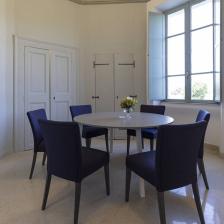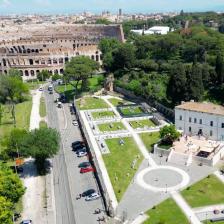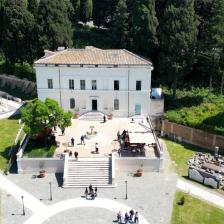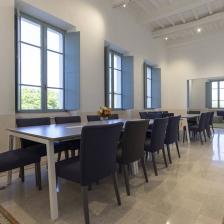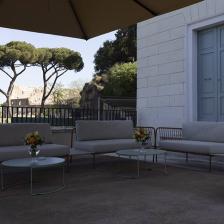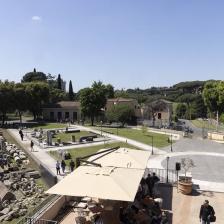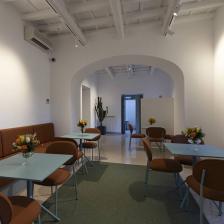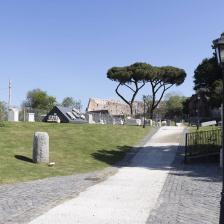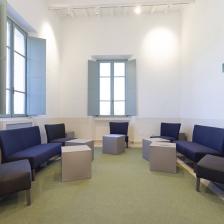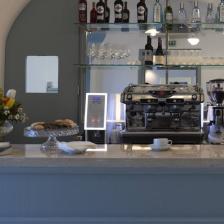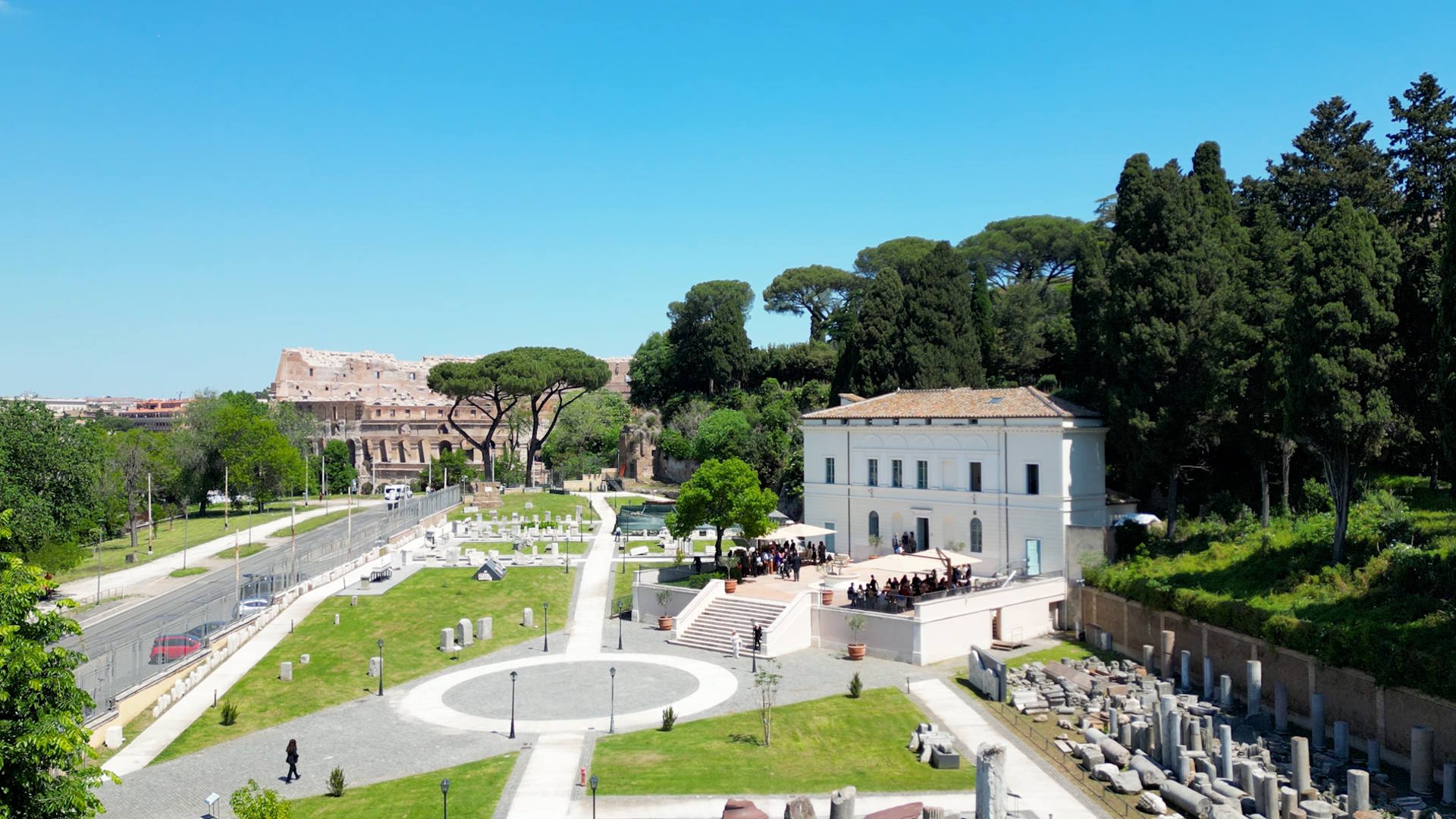
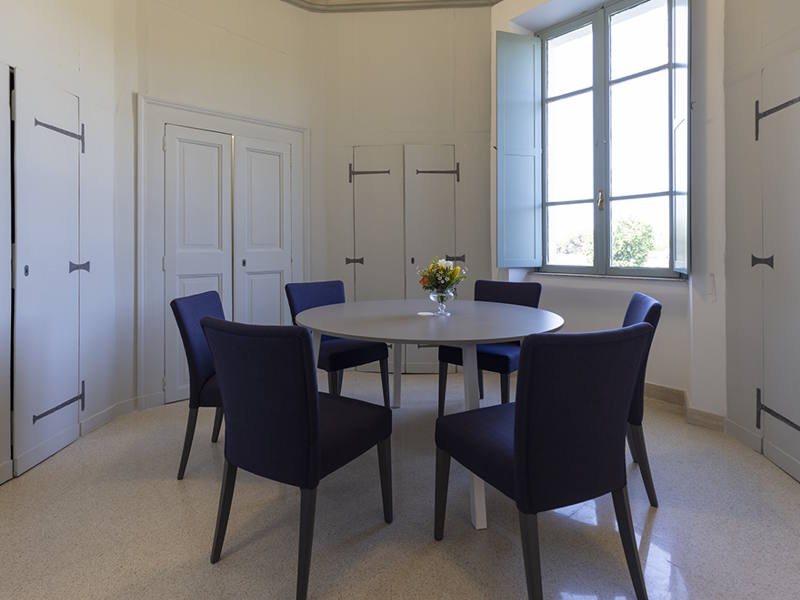
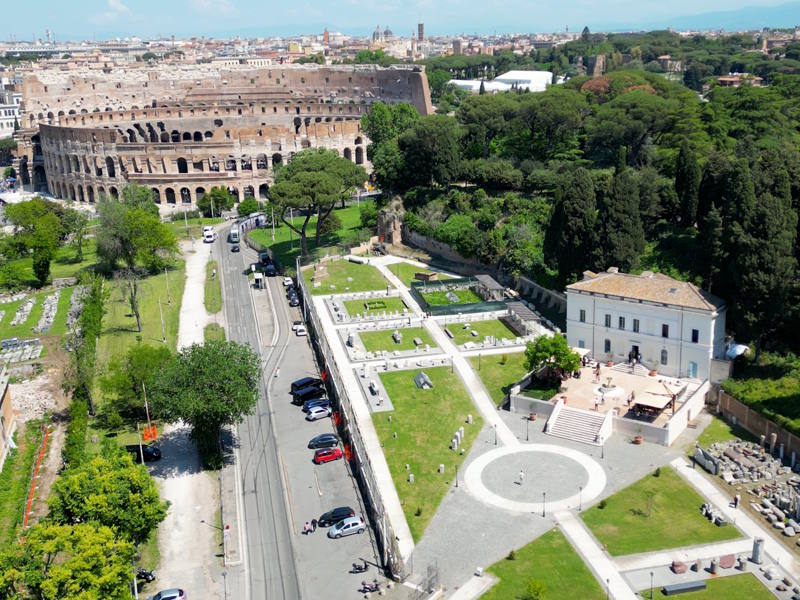
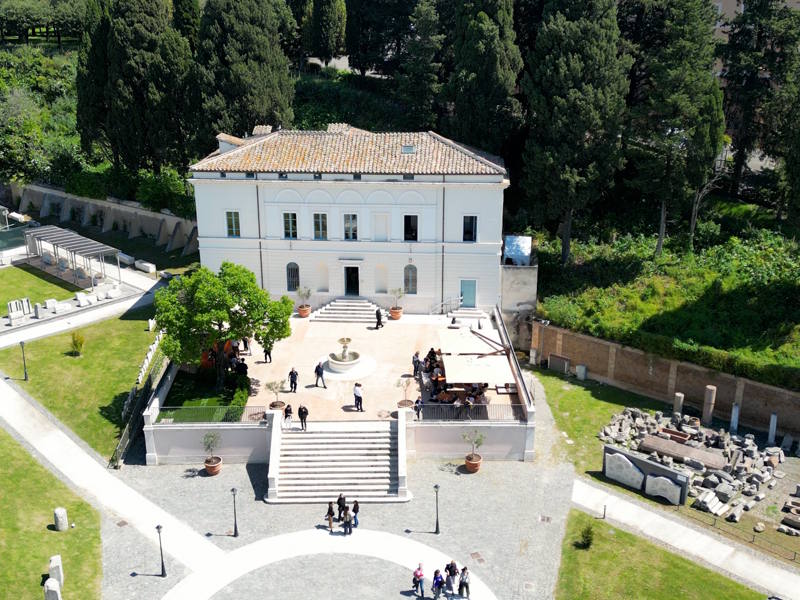
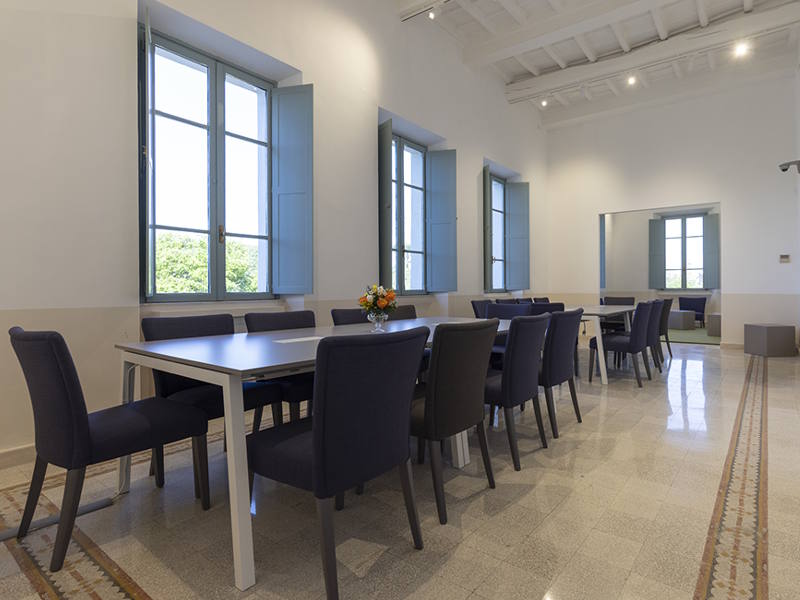
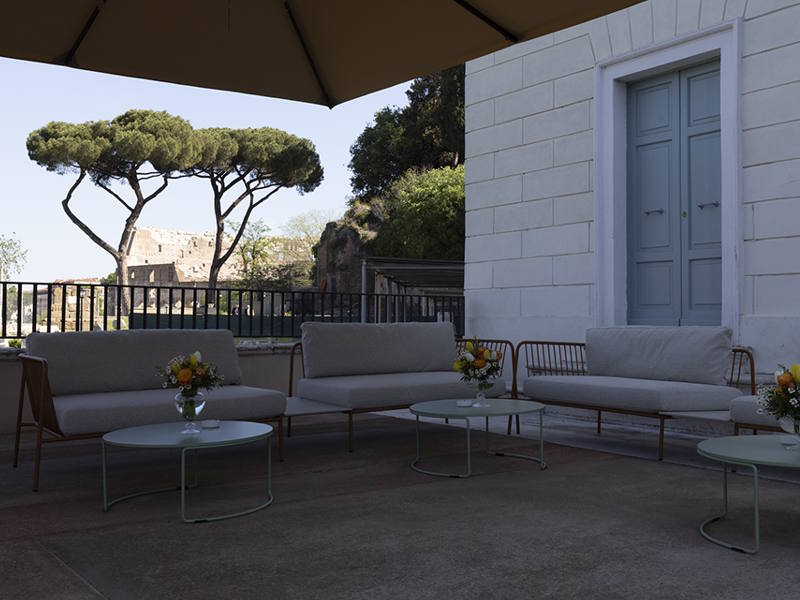
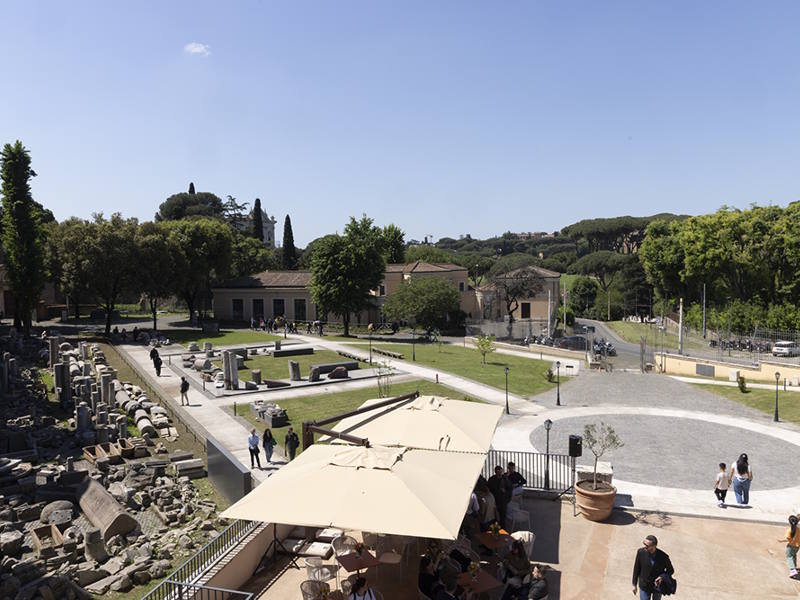
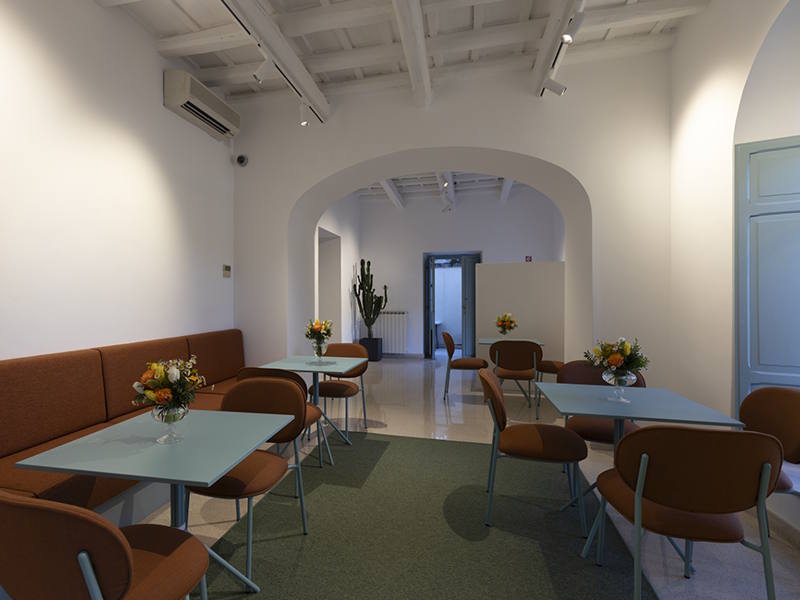
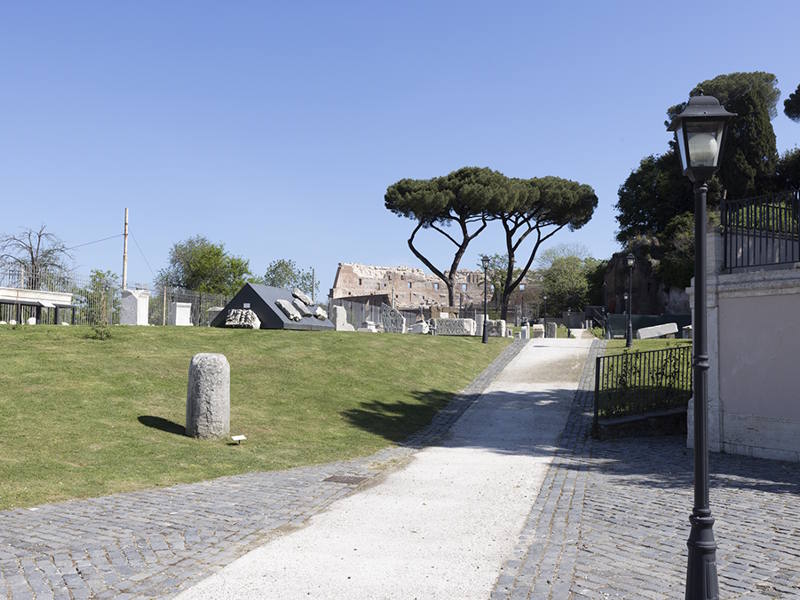
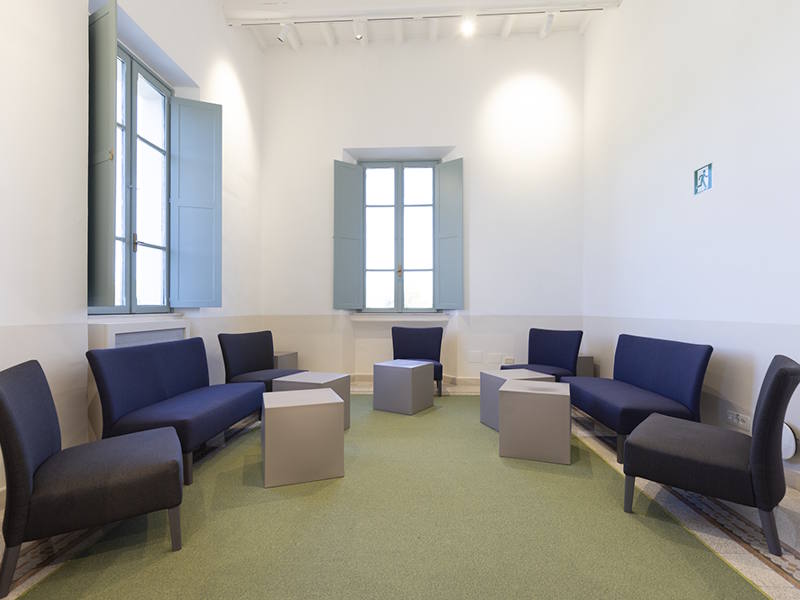
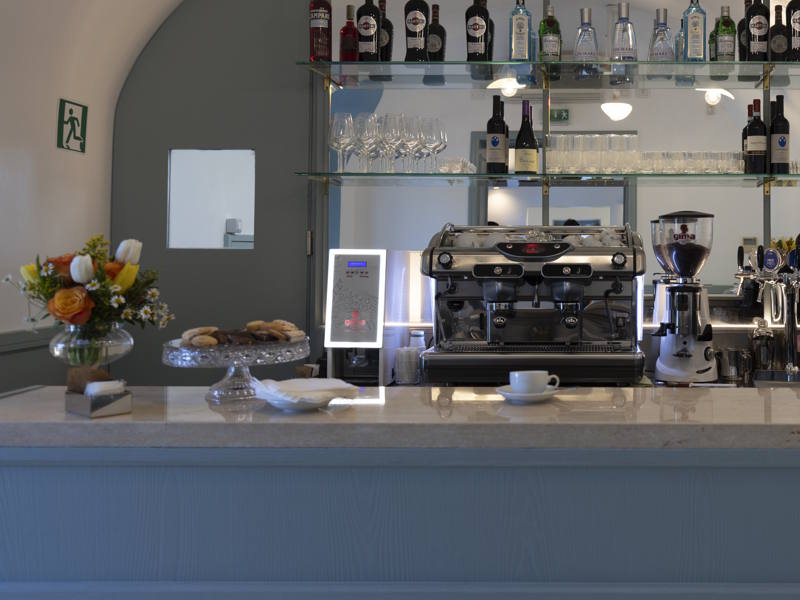
The history of the Parco Archeologico del Celio (Archaeological Park of the Caelian Hill) bears witness to the stratifications and evolutions that the entire area of the hill has undergone over the ages since the foundation of Rome.
In the 16th century, the current area of the Park was occupied by the Marquis Cornwall's Vineyard, whose family retained ownership until it was acquired by the French administration (1809-1814), which made it a dumping ground for the excavated soil resulting from major urban transformation projects. It was then, in the Napoleonic age, that the area took its present shape as an artificial embankment oriented towards the Colosseum and used as a public garden with large tree-lined areas, the Jardin du Capitole, the scenic archaeological promenade between the Roman Forum, the Palatine and the Colosseum.
To extend and embellish the archaeological promenade, the Casina del Salvi was built in 1835, close to the remains of the temple of Divus Claudius, at the behest of Pope Gregory XVI (1831-1846). The building, used as a cafeteria, was named after its designer, architect Gaspare Salvi, who was inspired by the coffee-house on the Pincio designed by Valadier.
Today, the Archaeological Park houses, in a reasoned layout, artefacts organised in thematic nuclei, the result of the great excavations carried out at the end of the 19th century for the creation of Roma Capitale: artefacts related to the funerary sphere, sculptures, decorations, altars dedicated to the divinities of the Roman pantheon, fragments of public and private buildings, cippus marking the boundaries of the Urbe and a rich harvest of materials that tell the story of ancient Rome.
With its privileged viewpoint over the Colosseum and the Palatine Hill, after meticulous restoration, the Casina has returned to its 19th-century purpose as a refreshment centre with a cafeteria on the ground floor and on the outdoor terrace, and a Study Room, equipped with wi-fi and furnished with tables for recharging mobile devices and relaxation areas, on the upper floor.
The park also houses the Museum of the Forma Urbis, which displays the surviving fragments of the famous Forma Urbis Roma, the marvellous marble map that provides a unique panorama of the urban landscape of ancient Rome. The building, formerly the Gymnasium of the Italian Youth of the Littorio, has reopened to the public thanks to the interventions carried out under the scientific direction of the Sovrintendenza Capitolina ai Beni Culturali di Roma Capitale, and thus houses one of the rarest and most important testimonies that have come down to us from antiquity.
Photo: Roma Capitale
Museo della Forma Urbis
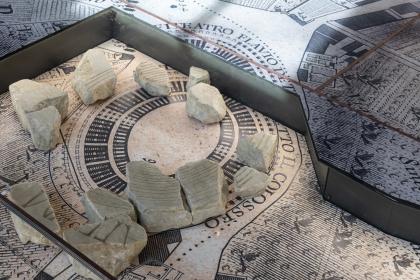
 Condividi
Condividi
Parco archeologico del Celio
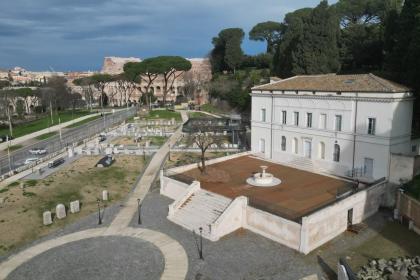
 Condividi
Condividi
The Flavian Amphitheatre (The Colosseum)
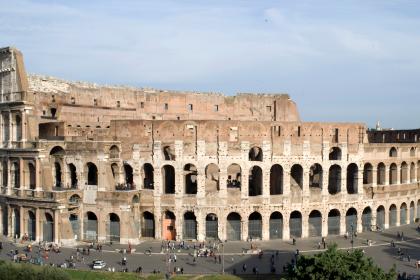
 Condividi
Condividi
Information
null
 Condividi
Condividi
Location
To find out about all accessibility services, visit the Rome accessible section.












































